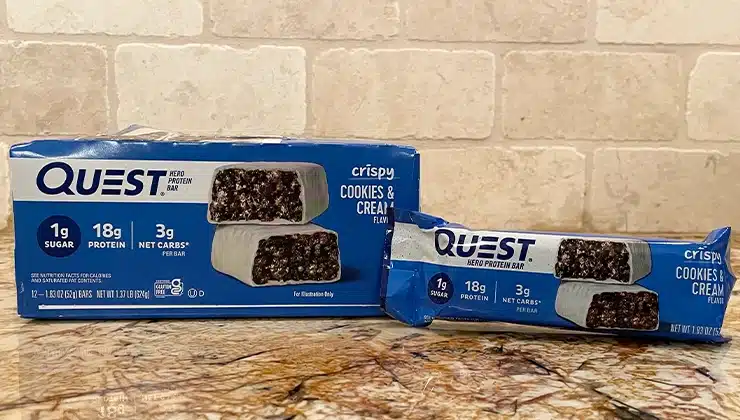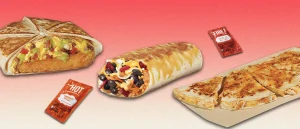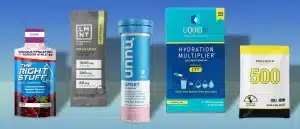If I Could Live on Protein Bars Alone, I’d Only Eat This One
Welcome to Take My Money, a column where we geek out about our favorite products.
My record for protein bars eaten in a single day is four. I’m not proud of it, nor do I recommend it. But when stuck on an eight hour train ride, I’d rather eat a protein bar than some soggy microwave pretzel, or a wilting BLT.
Especially if that protein bar is from Quest Nutrition.
Quest Nutrition Protein Bars were recommended to me by a friend and certified trainer because they’re everything you want in a protein bar. He said they’re low calorie, low sugar, taste great, and are packed with 18 to 20 grams of protein. I hate eating some sugar-bomb product when I’m rushing out the door, only to feel sick 20 minutes later. With Quest, I love how I stay full and have the energy to crush whatever workout comes my way.
What Are Quest Protein Bars?
Quest’s protein bars come from the same company that makes protein powders, shakes, and of course, my other favorite protein snack, protein chips. They’re the most convenient way for me to hit my protein goals for the day, and they actually taste good. I’ll eat them for breakfast if I’m on-the-go, before a workout for some quick fuel, or as a snack if I’m tired of munching on carrots.
Are Quest Bars healthy?
Generally speaking, yes, Quest Protein Bars are healthy. They come with a very low sugar load (1g), reasonable calorie count (190), and fairly robust fiber content to boot (13g). It’s a solid hold-me-over snack between meals, or right after a workout when your body is craving nourishment.
That said, it’s still a highly processed food and certainly can’t replace whole foods you might eat in a cooked meal. Its vitamin and nutrient profile are lacking, too. Quest Bars and other products like them are best for supplementing small gaps in a diet—not making up a significant cornerstone of one.
Taste and Texture
Hands down, my favorite flavor is cookies and cream. This flavor reminds me of a Hershey’s Cookies ‘N Creme chocolate bar and satisfies that candy itch without all the sugar. Quest has 18 other flavors to choose from like s’mores and oatmeal chocolate chip (my other go-tos) so I never get bored of the taste.
Most of the bars Quest offers are chewy and wrapped in chocolate, but they don’t get stuck in your teeth like Rx Bars do. There are “crunchy” options too, which have that crisp shell on the outside and soft chew on the inside.

Nutrition Facts (for cookies and cream flavor)
|
Serving Size |
1 Bar |
|
Fat |
8g |
|
Carbs |
21g |
|
Protein |
21g |
|
Sugar |
1g (with 0g added sugar) |
Protein
Quest Protein Bars range from 18 to 21 grams of protein depending on flavor. They use a blend of milk protein isolate and whey protein isolate, which both digest quickly and don’t upset my stomach. Plus, they fill me up fast and are perfect for muscle building and repair.
Sugar
With only one gram of sugar per bar (and zero added sugar), there’s nothing to complain about. A lot of bars on the market rely on sugar to keep you coming back for more—a typical protein bar can have more than 10 grams of added sugar. Not Quest. The brand uses a combination of stevia extract and sucralose, which are zero calorie sweeteners.
What’s more, they have just 150 to 200 calories per bar, around 23 grams of carbs, and under 10 grams of fat (dependent on flavor).
The Bottom Line
Quest Protein Bars hit the sweet spot of an ideal pre- or post-workout snack: they’re low in calories and sugar, but have about the same amount of protein in a protein shake. There are 19 flavors to choose from, but none of them include the garbage ingredients in many other brands’ bars. They keep me full and don’t mess up a perfect eating day.









